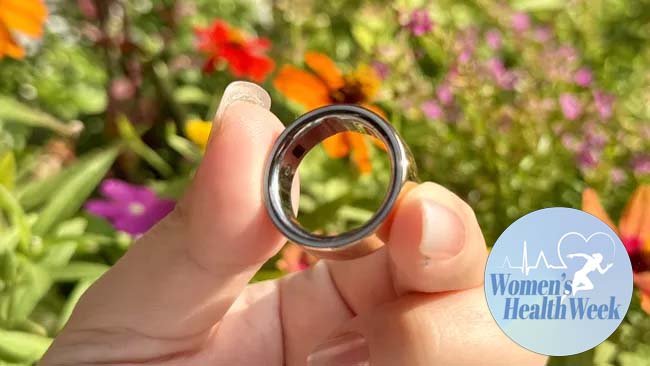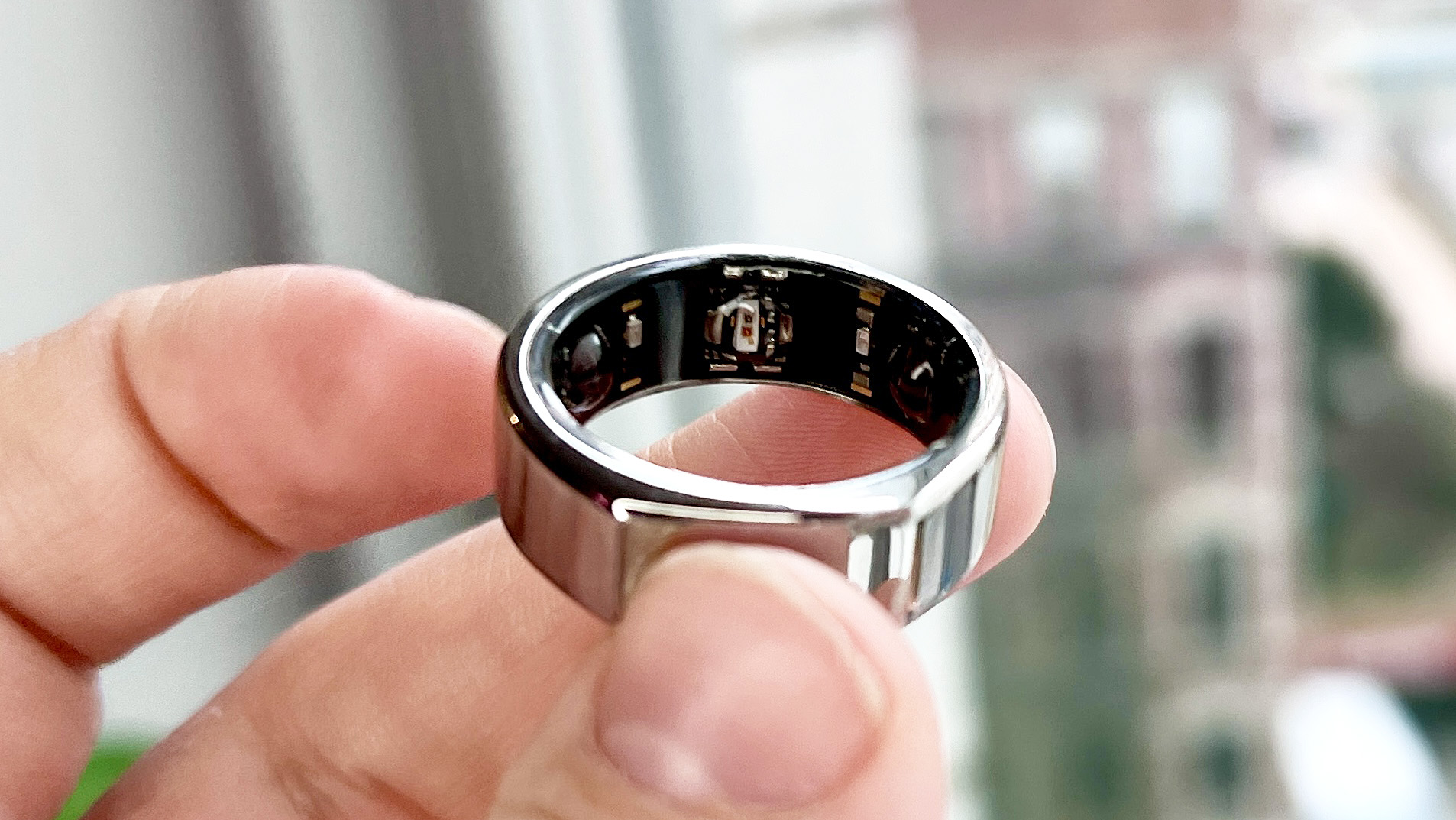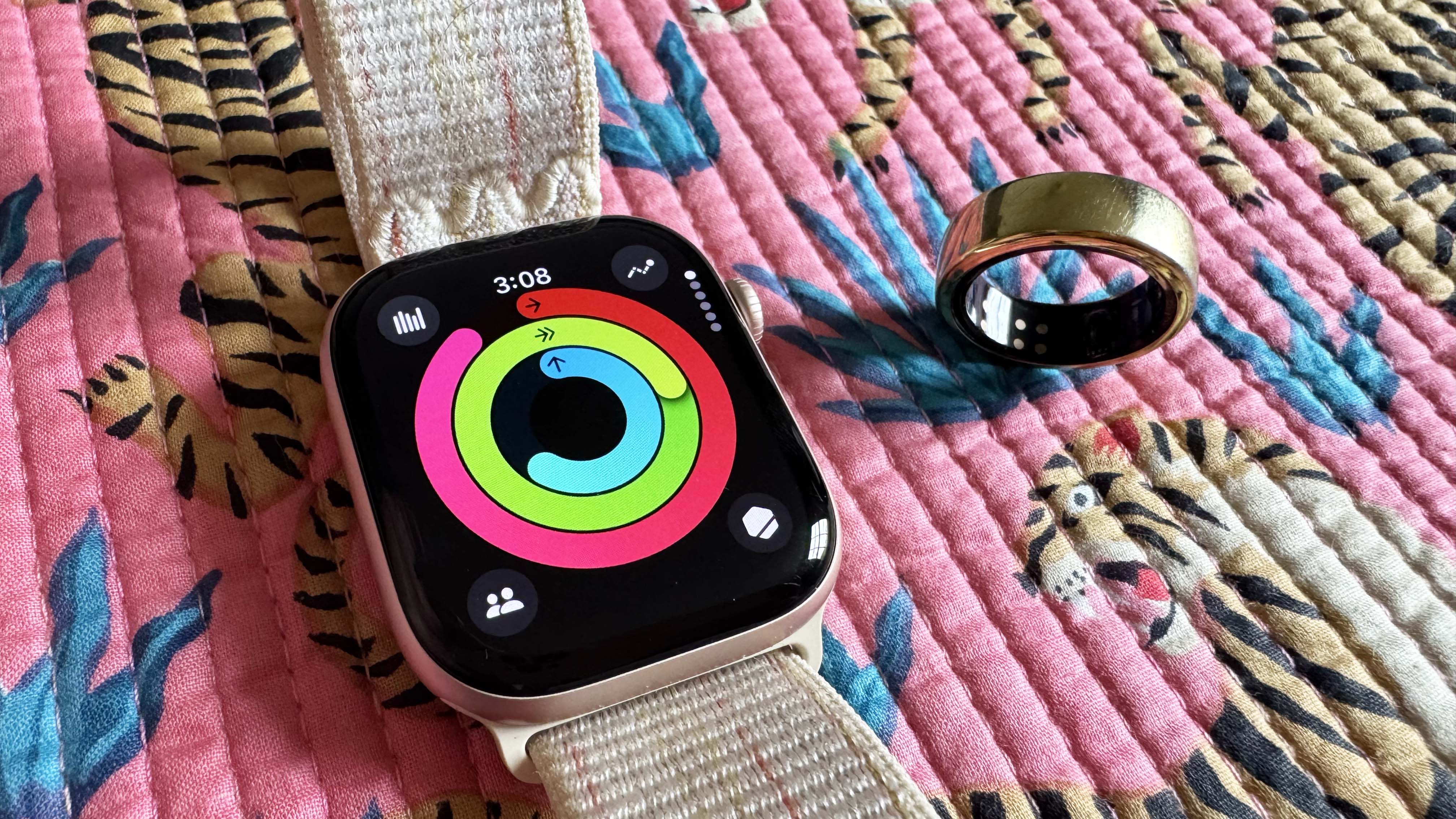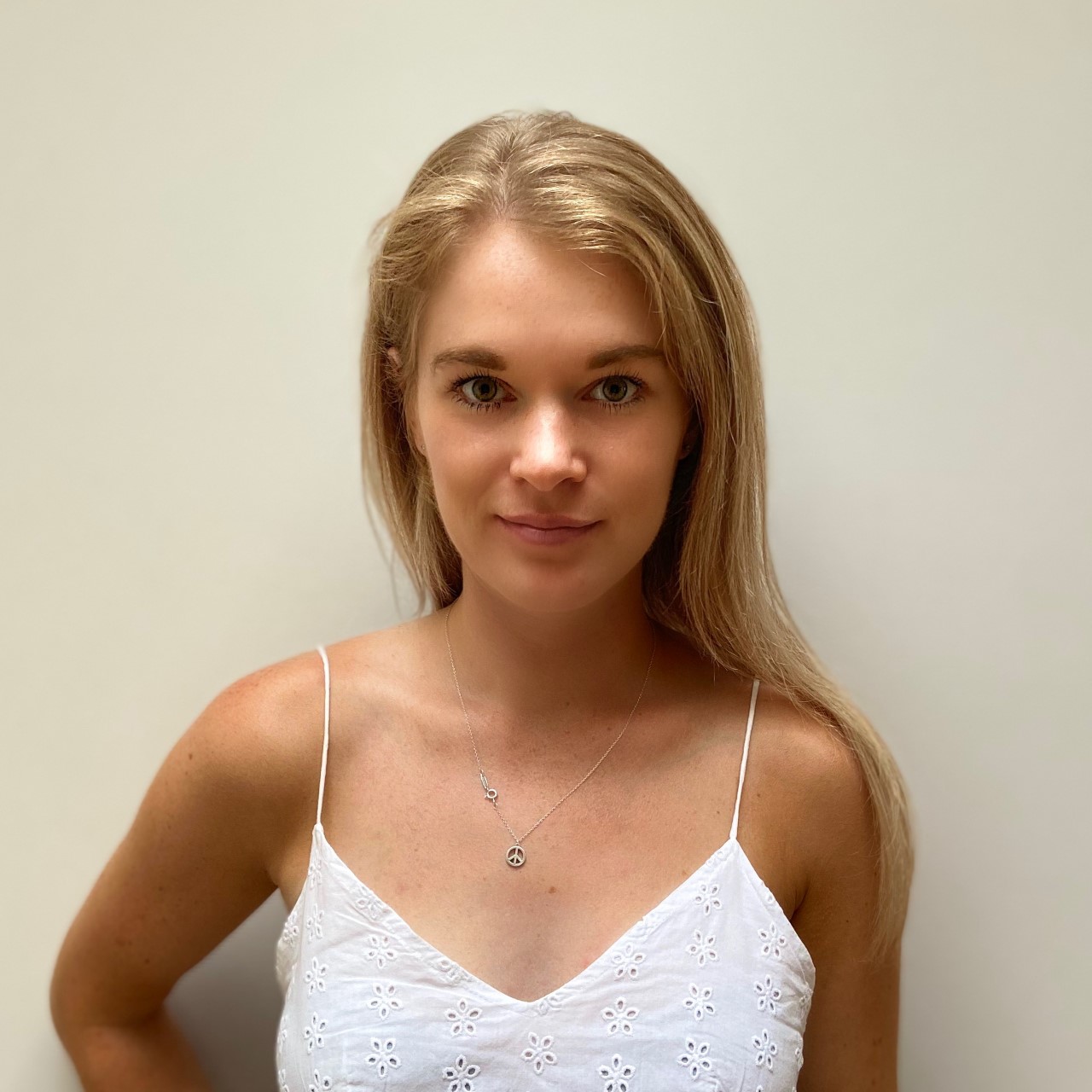Exclusive: Oura explains how it's changing the game when it comes to menstrual tracking
We sat down with Oura’s Senior Product Manager to find out more

I’ve used the Oura ring to track my menstrual cycle for the past four years, and it’s the only device I trust to do so. My Oura ring knew I was pregnant before I did, helped me keep an eye on my vitals during pregnancy, and monitor how ready I was for exercise with a toddler who doesn’t sleep. That, and many others, is a reason why it's at the top of our list of the best smart rings.
This article is part of Tom's Guide's Women's Health Week — a series of content that explores how technology and the right workouts can support and empower women through every phase of life.
But Oura is doing far more behind the scenes — in fact, it's designing algorithms for women, something that shouldn’t be groundbreaking in 2025, but really is. We sat down with Oura’s resident women’s health expert, Dr. Neta Gotlieb. Gotlieb is a Senior Product Manager and Clinical Research Scientist, who has led the teams that developed Cycle Insights and Pregnancy Insights on the Oura ring.

Dr. Gotlieb earned a Master’s Degree in Biological Psychology from Tel Aviv University and a PhD in Reproductive Neuroendocrinology from University of California Berkeley, where she focused on the neural regulation of menstrual cycles, pregnancy, and birth. She has also received the Women in Tech Global Technology Leadership Award.
A mother of two daughters, Dr. Gotlieb is the author of the children’s book, Every Body’s Brain.
What are the biggest challenges in developing wearable technology that accurately tracks physiological signals related to women's health and the menstrual cycle?
Developing wearable technology for women’s health is complex due to significant biological variability and data gaps, as people with uteri have been historically under-researched. Hormonal changes differ greatly across individuals and even from cycle to cycle, making it difficult to standardize predictions. Additionally, much of the health and biometric data historically used to build algorithms has been male-dominated, limiting accuracy and inclusivity for women, especially those with irregular cycles or conditions like PCOS (Polycystic ovary syndrome).
Oura addresses these challenges by using continuous, longitudinal data to build personalized baselines rather than relying on one-size-fits-all models. Our Cycle Insights feature specifically is grounded in physiological signals like temperature and heart rate variability, which Oura interprets in context over time. In addition, we are constantly conducting research to help improve not only our algorithms but also the scientific literature more broadly.
How is Oura specifically designed to support women's health needs and to track hormonal changes?
Unlike some wrist-worn wearables, the ring form factor has a convenient and comfortable design that can be worn 24/7. This is particularly important because Oura can track women’s health needs, like cycle phases, using biometrics — most notably skin temperature — to deliver contextual and actionable insights into health. The team has put a heavy focus on women’s health feature development and research over the last few years to deliver resources for our female members.
While the traditional calendar method assumes a woman’s cycle is 28 days, modern research makes it clear that menstrual cycles vary widely between individuals, and in the same person from cycle to cycle. Rather than settle for general advice that is unlikely to match each individual’s experience, tools like Oura help women identify their menstrual cycle and map how it affects different systems in the body. These insights can help members adapt their routine to each cycle phase.
Oura’s Cycle Insights feature (formerly known as Period Prediction) uses physiological data that is impacted by hormonal fluctuations, including heart rate, heart rate variability, temperature trends, and respiratory rate, to show current and past cycles with information on when a member’s follicular and luteal phases take place. It also predicts the start of the next cycle and period onset within a five-day window. Meanwhile, for members who opt into Cycle Insights, they can utilize Fertile Window, a feature that uses two algorithms to predict and detect users' most fertile days based on past cycles and biometric data.
Get instant access to breaking news, the hottest reviews, great deals and helpful tips.
Oura also integrates with Natural Cycles to analyze body temperature and other key fertility indicators to determine your daily fertility status to plan for or prevent pregnancy naturally.
At Oura, we believe that women’s health extends far beyond reproductive health, which is why we present this data alongside other valuable health insights like sleep, activity, stress, heart health, and now metabolic health. Taken together, we’re providing comprehensive insights into overall well-being that can help women better manage and understand their health at various points in their cycle.

How can Oura's data be used to help women optimize their exercise, sleep, and nutrition based on their menstrual cycle phase?
Oura offers a valuable lens into the subtle shifts your body experiences throughout your menstrual cycle. While the idea of aligning exercise, sleep, and nutrition with these phases is intriguing, it's essential to remember that every body is unique, and the science in this area, especially for the average person, is still evolving.
By tracking your cycle phases alongside your sleep patterns, activity levels, and even notes on your nutrition and how you feel, you may start to identify your own individual patterns and correlations. For example, you might notice that during your follicular phase, you naturally have more energy for intense workouts, or that your sleep quality tends to dip in the luteal phase. Oura highlights these trends over time, providing a richer context for understanding your body's rhythms.
This information can then inform your choices, rather than dictate them. You might feel inspired to experiment with different types of exercise during phases where you typically have more energy, or prioritize earlier bedtimes when your data suggests a tendency for less restful sleep. Similarly, you might become more attuned to changes in your appetite during certain phases and make conscious nutritional choices that support your comfort.
Crucially, Oura also captures a wealth of other vital data points like stress levels and chronotype, which, as research suggests, can significantly influence how you feel and perform, potentially even more so than hormonal fluctuations alone. By considering this broader picture, you can make truly holistic decisions that account for all the factors impacting your well-being.
Ultimately, Oura's role isn't to tell you exactly what to do based on your cycle. Instead, it's to provide you with the personalized data and insights to become more deeply connected to your body's natural rhythms, fostering a trial-and-error approach to discover what truly supports your individual exercise, sleep, and nutritional needs throughout your cycle and life.

Can Oura's technology be used to reliably track perimenopause?
Oura Ring can be a valuable tool to navigate perimenopause, as it accurately tracks key health metrics affected during this transition, including sleep quality, body temperature, heart rate variability, and resting heart rate metrics–all of which often fluctuate with hormonal changes.
Oura’s Perimenopause Report found women can lose up to two hours of sleep weekly during this stage. Oura’s detailed and research-validated sleep staging algorithm can help quantify and manage this decline by identifying patterns and triggers for disturbances like night sweats or insomnia. The report also found that heart rate variability, a key indicator of cardiovascular health, shows a 20-30% decline in early and late perimenopausal women. By tracking heart rate, HRV, and Resilience continuously, Oura can help members understand how stress and emotional changes impact their heart health, as well as identify stressors and recovery needs to determine management strategies.
During perimenopause, cycles become irregular. If a member opts in to Oura’s Cycle Insights, she can track her cycle regularity and download a six-month report of data to understand trends in her cycle and period length, temperature fluctuations, and more.
Recently, Oura introduced two new metabolic health features: Meals and Glucose. These features can now allow members to see how nutrition, sleep, stress, and activity all influence blood glucose levels, which is important as metabolic changes often occur during perimenopause. The insights can help metabolic balance and energy management during this stage.
Finally, Oura added 17 new tags specific to this transition to help members track symptoms and interventions, including hot flashes, mood swings, and HRT. Over time, they can see informative patterns in the Trends view of their data.

Oura recently claimed its cycle tracking was more accurate than Apple's — can you tell us more about this?
The initial results from our ovulation detection validation study showed that Oura Ring had a 96.4% accuracy for estimating ovulation compared to the calendar method. Oura Ring demonstrated strong accuracy for irregular cycles, reducing ovulation detection errors from 6.63 days (calendar method) to 1.48 days. 82% of ovulation estimates were within 2 days of the reference date, compared to 32.5% using the calendar method
The study assessed the strengths, weaknesses, and limitations of using physiology from the Oura Ring to estimate ovulation date. The study compared performance across cycle length, cycle variability, and participant age. In each group, they compared the algorithm’s performance to the traditional calendar method and leveraged ovulation prediction kits as a benchmark. The study sample consisted of 964 female participants with a mean age of 33 and a mean self-reported cycle length of 29 days.
Apple recently published the results of their own ovulation detection capabilities and reported an average error of 1.70 days, with only 73.8% correctly detected within +/- 2 days.
How does Oura see the future of wearable technology evolving, and what role will Oura play in that evolution?
We see wearable technology like Oura Ring evolving towards even more personalized data and insights with a proactive approach to healthcare, and with a focus on holistic well-being. As it relates to women’s health, we want Oura to be a comprehensive tool for women in understanding their body literacy, supporting them through every stage of their lives, and empowering them to take an active role in their health and well-being.
More from Tom's Guide
- Oura Ring Generation 4 review
- Oura Ring 3 vs Oura Ring 4
- I had a baby one year ago — these are the 5 exercises that helped strengthen my core

Jane McGuire is Tom's Guide's Fitness editor, which means she looks after everything fitness related - from running gear to yoga mats. An avid runner, Jane has tested and reviewed fitness products for the past five years, so knows what to look for when finding a good running watch or a pair of shorts with pockets big enough for your smartphone. When she's not pounding the pavements, you'll find Jane striding round the Surrey Hills, taking far too many photos of her puppy.
You must confirm your public display name before commenting
Please logout and then login again, you will then be prompted to enter your display name.
